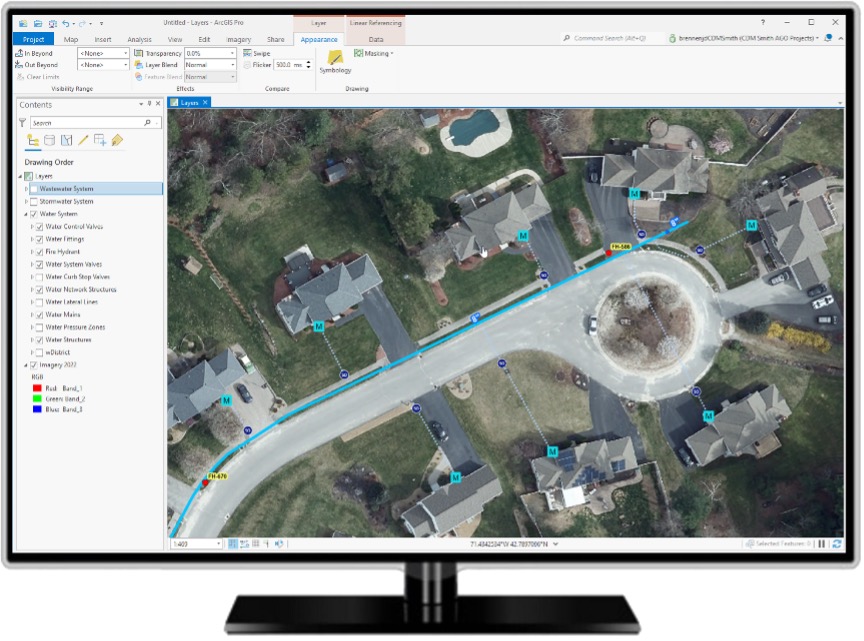Supporting Worldwide Readiness with Asset Management
Best-in-class asset management
For over a decade, the Naval Facilities Engineering Systems Command (NAVFAC) and CDM Smith have formed a partnership to support readiness worldwide. The team is working together to develop and implement asset management processes that improve utility engineering and prioritize maintenance and capital replacement projects at installations ranging from Jacksonville to Japan, from Norfolk to Pearl Harbor, and from Italy to Guam. To achieve the mission of “supporting the warfighter with safe, reliable, and cost‐effective utility services,” NAVFAC adopted a system-wide asset management initiative to take on the challenge of evaluating infrastructure, regulatory and operational requirements, and funding. Building on the success experienced by the U.S. Navy, the U.S. Marine Corps now is following suit to take stock of their assets in a fortified, repeatable utilities infrastructure and condition assessment program with support from our team.
The overarching goal of this program is to maximize the value out of infrastructure investments for the Navy and Marine Corps in a multi-step, repeatable approach: taking stock of inventory and assessing the condition, assessing the risk of each asset, recording and ranking each asset based on risk, and following up with a preventative maintenance program. Improving the reliability and resilience of infrastructure systems, particularly in the face of natural disasters, climate change, and other external factors is a key program driver. The “homegrown” program was perfected for the Navy with CDM Smith staff training Navy staff to assess utilities autonomously. For the Marines, the firm is taking a boots-on-the-ground approach by assembling the manpower to complete inventories at each base.
A repeatable framework for success
The development, testing, and implementation process for inventorying all utility property includes water, sewer, electric, gas, steam, industrial waste and more. By assessing the current condition of all property, determining the remaining useful life and assessing risk raised by asset failures, the team is able to rank all assets across utilities.
To streamline the inventory process, the CDM Smith team built a custom app that incorporates all necessary protocols, then extracts pre-existing information from the facility’s GIS and Computerized Maintenance Management System (CMMS). From this pre-existing data, a database is created that updates the GIS and CMMS with the field inventory data and links the new data with the older records. The tool has been tailored specifically for mobile use on rugged handheld tablets.
To consistently assess the risk of asset failure, the team built out a repeatable framework that includes processes to evaluate likelihood of failure, consequence of failure, and redundancy. The process is implemented through a structured series of workshops involving field, management and engineering staff with scoring and reasoning captured in a custom tool that provides accountability and repeatability. The tool enables staff to rank projects by risk then assess the cost for mitigation approaches.
Fortifying NAVFAC's assets
At the installations where this process has already been completed, the number of assets included in the CMMS have more than doubled with records of asset condition. A “risk profile” for each asset is created and the base is now able to identify more short-term projects to mitigate high-risk assets quickly and efficiently. The team also established protocols to ensure that the database and risk process are maintained over time.

Prime technologies used included Esri GIS, Maximo CMMS, tablet-based mobile solutions, in-field GPS and SUE, risk assessment tools, and custom web and mobile applications. Key services the team provided include asset management and GIS implementation planning, mobile asset inventory and condition assessment technology, deployment of utility GIS databases for bases worldwide, integration of asset inventory and GIS with the Maximo environment, training programs and more.
This large-scale program is resulting in an environment that is changing utility asset management, impacting every level of utility management from planning to construction to maintenance, fortifying NAVFAC’s assets into the future.


CDM Smith allows me the flexibility to work on projects that I'm passionate about and supports me in finding new ways to solve problems that have real implications for improving people’s lives.
